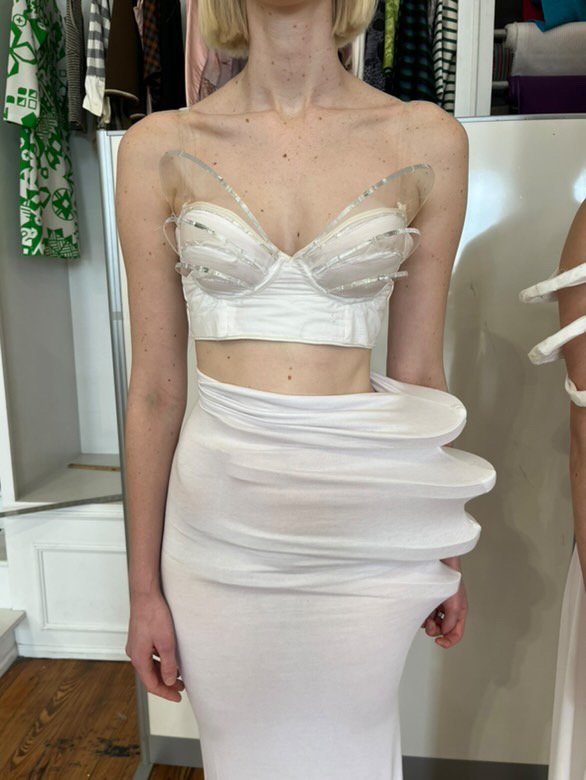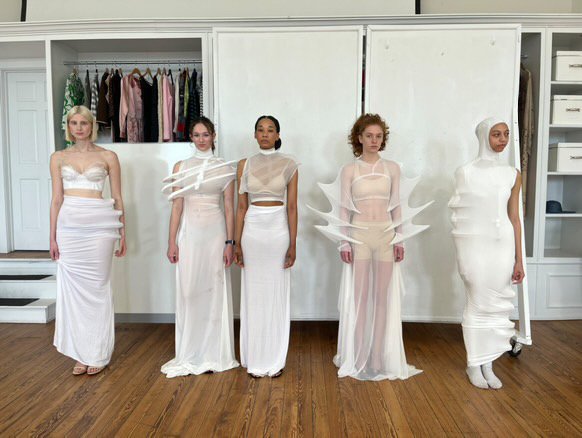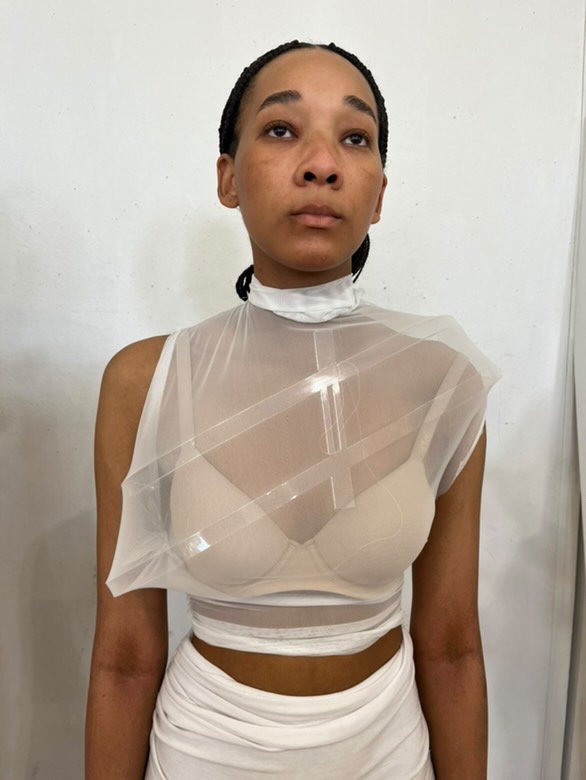woman vs fish
SENIOR THESIS
Inspired by early theories of evolution, ‘woman vs fish’ is a fashion collection that examines the physical transformation from woman into fish. The collection uses laser cutting technology to form BONE-LIKE structures that reflect this metamorphosis.
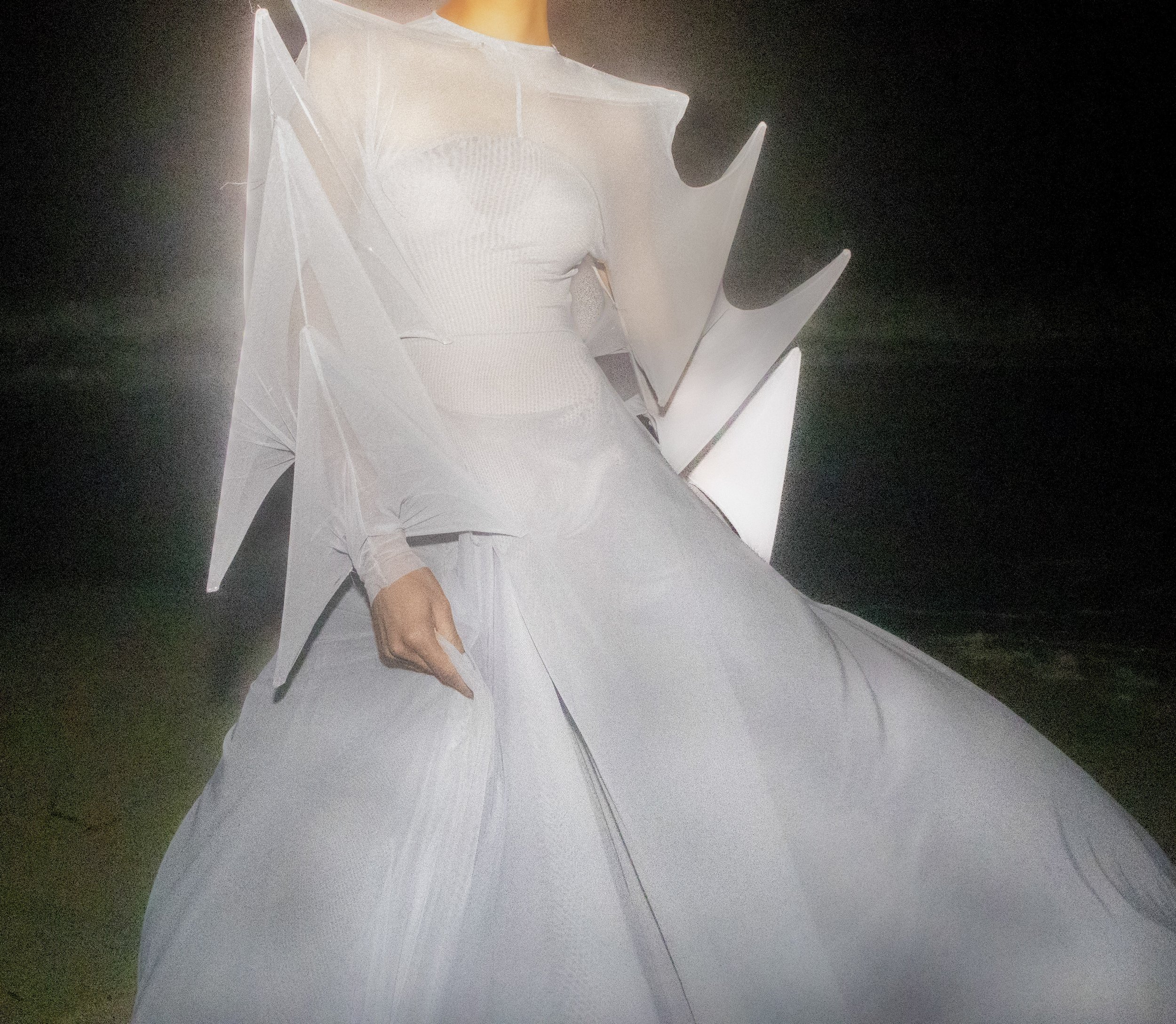
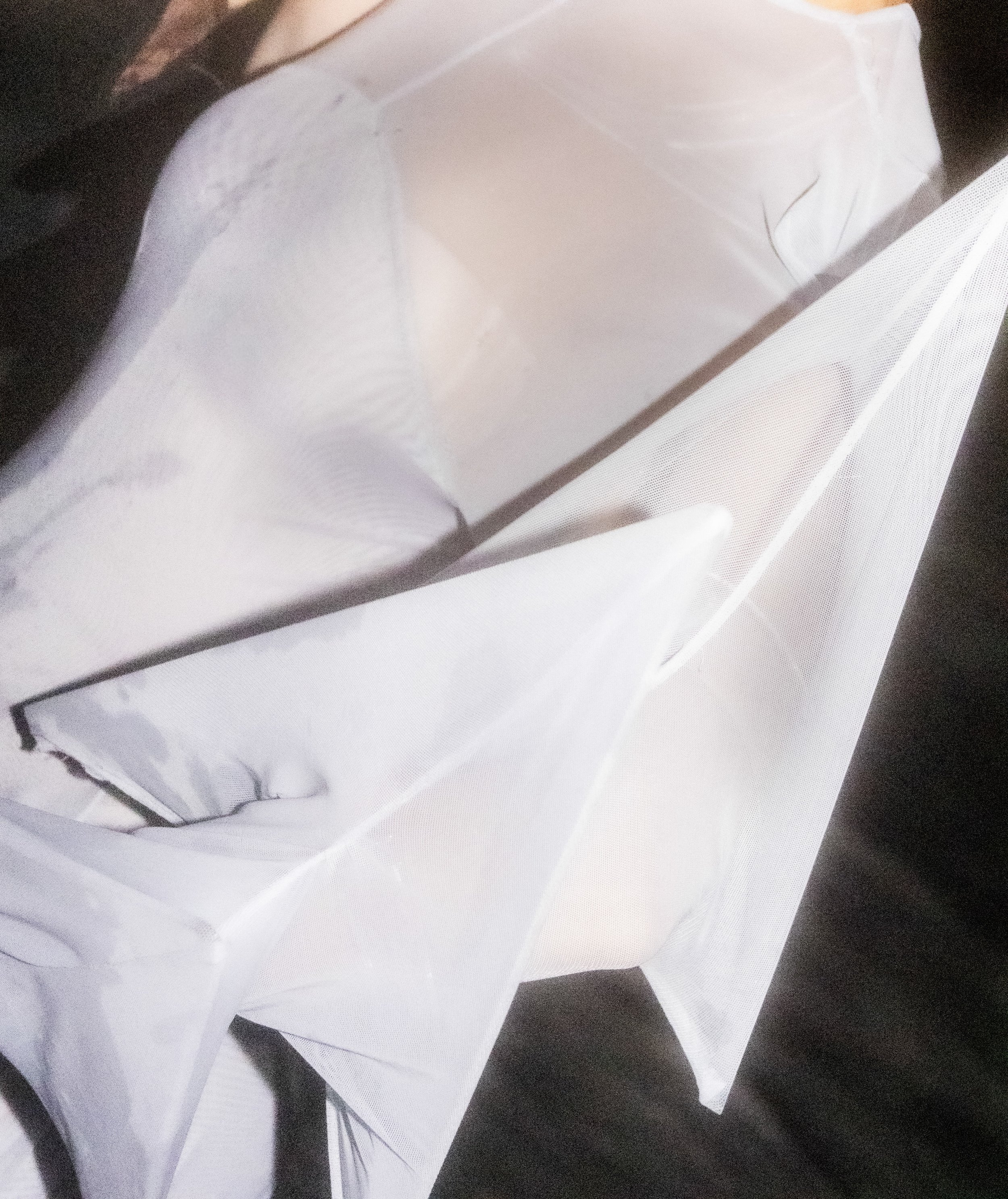
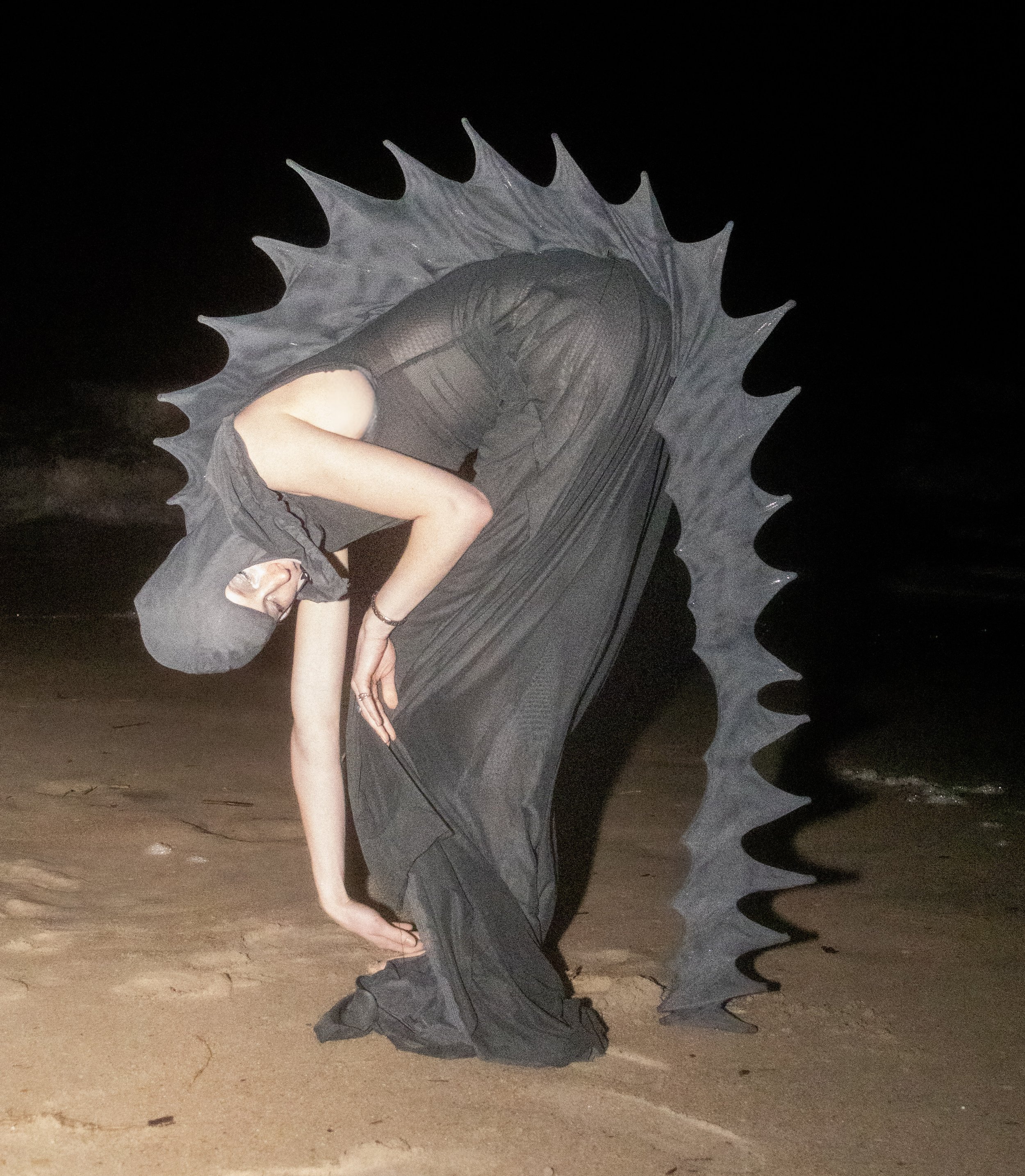
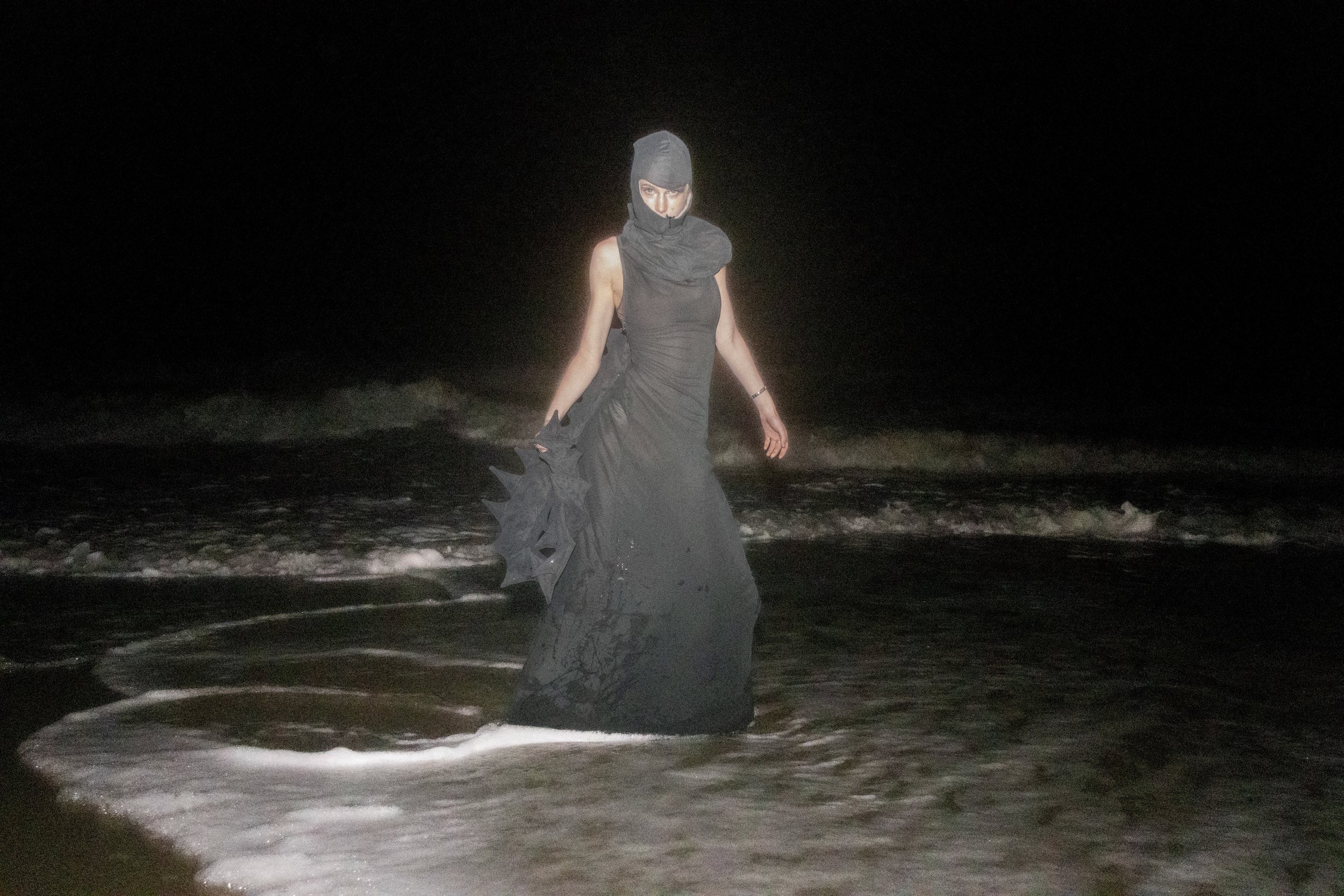
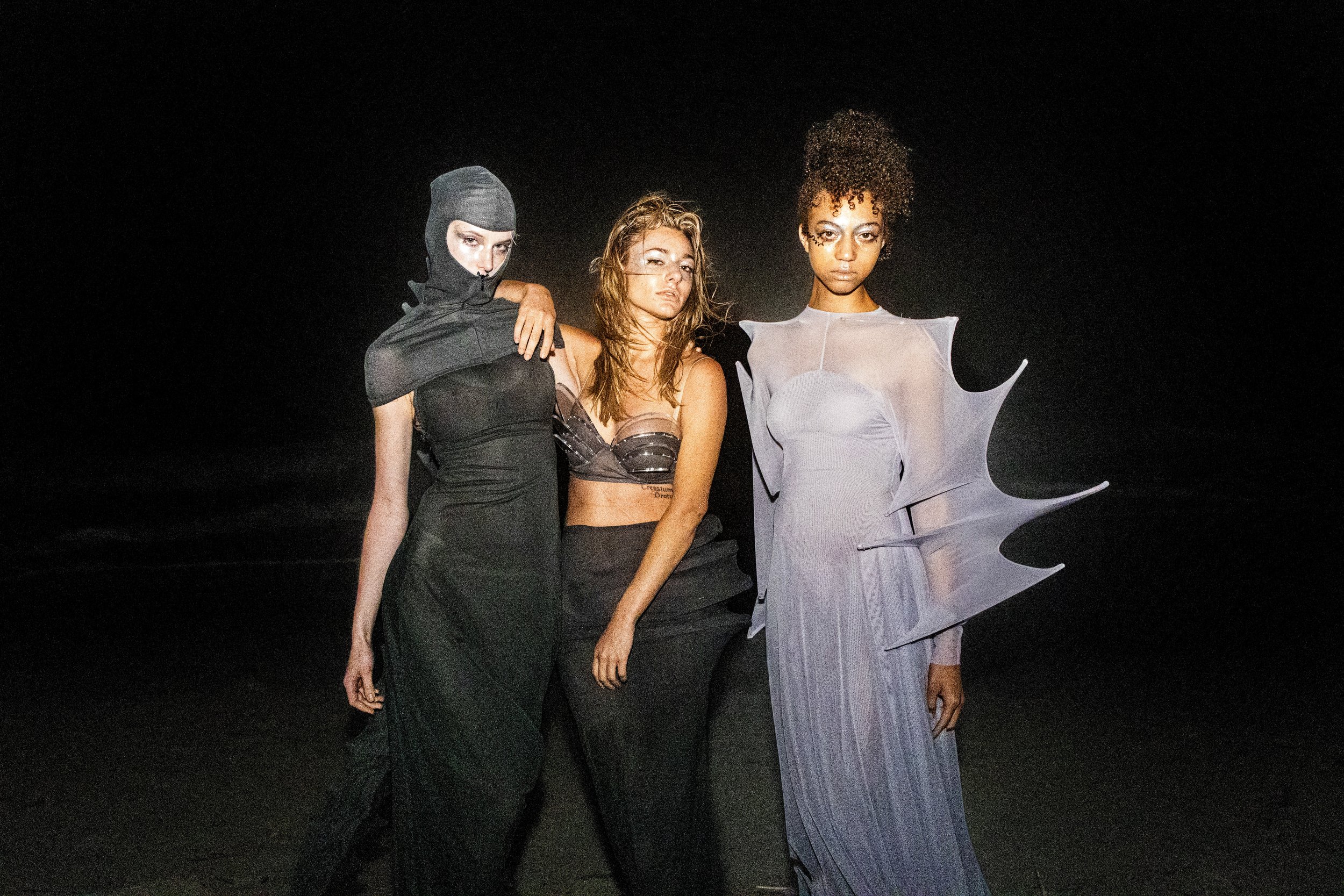
THE PROCESS
CONCEPT DEVELOPMENT
One early theory of evolution claimed that humans began life inside the bodies of fish, which eventually beached themselves so the humans could emerge and walk on land. While it sounds absurd now, I’ve always been fascinated by the surreal and the strange. This idea of transformation made me wonder—what if evolution came full circle? What if, in the future, humans return to the ocean, evolving once again into aquatic beings? This collection explores that possibility, blurring the line between human and marine life, and imagining a world where women undergo this metamorphosis.
2. SKETCHBOOK / CONCEPT RESEARCH
I often center my work around the experience of womanhood. The Return began with an interest in how women relate to their bodies. I began by researching how the body contorts, looking into the bones that form that shape the body itself. I became fascinated by how bones change over time, leading me to explore early theories of human evolution.
Inspired by the idea of humans emerging from fish, I began imagining garments that reflect this transformation. X-rays of human and aquatic forms became a key reference, helping me create silhouettes that merge flesh, bone, and sea—tracing an imagined path of evolution back to the ocean.
3. SILHOUETTE EXPLORATION
While designing, I focused on the significance of each part of the body. I used bone-like structures to highlight areas associated with power and femininity. A structure at the hip or pelvis carried a different meaning than one at the breast or ribcage.
These forms were laser-cut from acrylic and sewn into carefully draped mesh. The rigid, sharp acrylic contrasted with the soft, sheer fabric, creating garments that felt both strong and delicate. In some places, the sharp edges pierced through the mesh, leaving small tears—subtle traces of tension between material and form.
4. LASER CUTTING
Creating the acrylic pieces involved several prototyping stages. I started by refining my sketches and translating them into a cardboard prototype, adjusting it on the dress form until it matched the original design. I then measured each piece and created a digital file for laser cutting.
5. PROTOTYPES
Prototypes played a crucial role in learning how to construct garments using acrylic. The garments were initially crafted from a stretch mesh/jersey fabric and subsequently altered according to a series of model fittings.
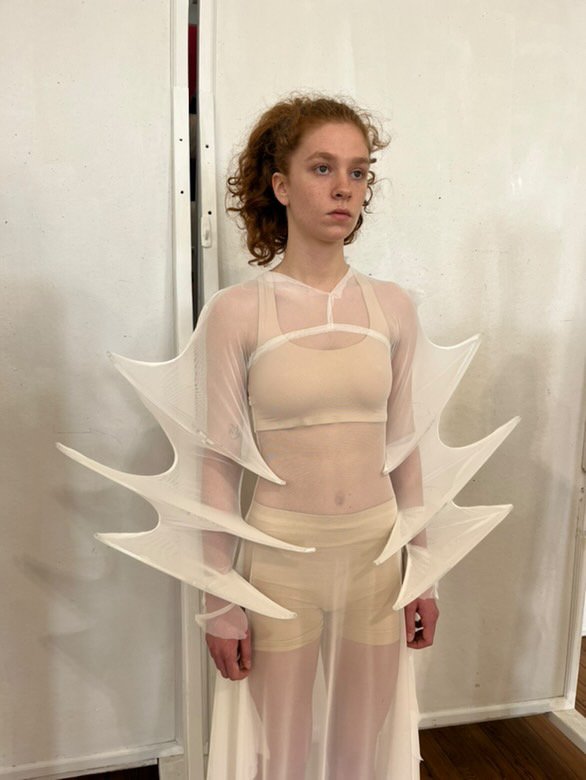
Prototypes played a crucial role in learning how to construct garments using acrylic. The garments were first made with a sheer stretch mesh/jersey fabric, and altered according to a series of model fittings.
